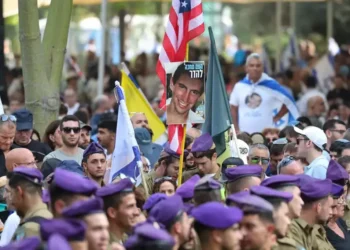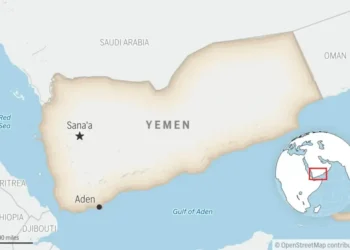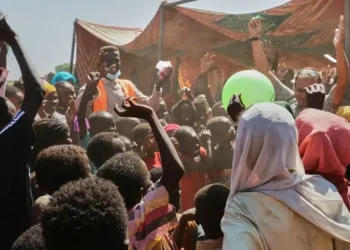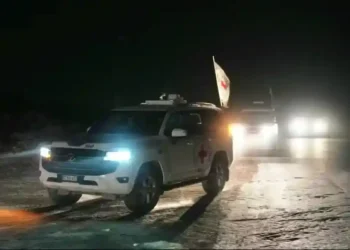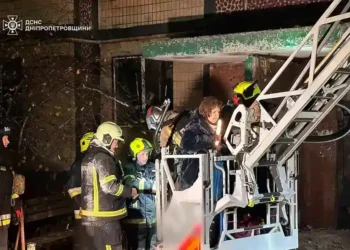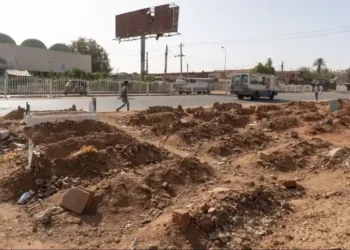Israeli Strike on Palestinian Refugee Camp in Lebanon Leaves 13 Dead, Renewing Fears of Escalation
Thirteen people were killed in an Israeli airstrike on a Palestinian refugee camp in southern Lebanon, according to Lebanese officials, marking the deadliest incident since a ceasefire ended last year’s Israel-Hezbollah war. The strike, which Israeli forces said targeted a Hamas compound, comes amid rising concerns over renewed cross-border violence. Lebanese authorities and Hamas disputed Israel’s claim, saying the attack hit a civilian area near a mosque.
Background and Context of the Strike
An Israeli drone strike on Tuesday hit the Ein el-Hilweh refugee camp on the outskirts of Sidon, killing 13 people and wounding several others, Lebanon’s Ministry of Health reported. The camp, one of Lebanon’s oldest and largest Palestinian communities, has long been a focal point of political tensions and sporadic clashes involving multiple Palestinian factions.
The state-run National News Agency said the blast struck a vehicle parked near a mosque within the camp. Medical teams moved rapidly to evacuate the wounded as local militia fighters restricted media access to the site, citing security concerns. The exact number of wounded remains unclear, though officials described the casualties as significant.
Israel’s military confirmed the strike, saying it targeted what it described as a Hamas training compound used to prepare attacks against Israeli forces. “The Israeli army will continue to act against Hamas wherever the group operates,” the military said in a brief statement. Hamas rejected that account, stating the location was a recreational sports area, not a military facility.
The conflicting narratives reflect a broader pattern of contested claims in cross-border operations, where verification on the ground is often difficult due to access restrictions and ongoing security risks.
Escalating Cross-Border Tensions
Cross-border exchanges have persisted despite a formal ceasefire.
The strike is the deadliest reported in Lebanon since the U.S.-brokered ceasefire that ended the Israel-Hezbollah war in late November 2024. Although the agreement temporarily halted months of heavy fighting, tensions have remained high along the Lebanon-Israel border. Israeli officials have repeatedly warned that both Hezbollah and Hamas are attempting to rebuild operational capabilities.
Lebanon’s Health Ministry has recorded more than 270 deaths and around 850 injuries caused by Israeli military actions since the ceasefire took effect. Many of these incidents stem from targeted strikes on suspected militant sites across southern and eastern Lebanon.
Local analysts say Israel’s operations reflect a strategy of preemptive action against Hamas and Hezbollah leaders. Over the past two years, numerous senior figures in both groups have been killed in Israeli strikes in Lebanon. Among the highest-profile deaths was Saleh Arouri, Hamas’s deputy political chief and co-founder of its military wing, who was killed in a drone strike in Beirut’s southern suburbs in January 2024. Several other Hamas officials have been targeted since then, part of Israel’s broader campaign to weaken the group’s regional network.
Origins of the Current Conflict
The violence traces back to October 2023 and escalated into a major regional confrontation.
The latest period of hostilities can be traced to the Oct. 7, 2023 attack by Hamas on southern Israel, which killed around 1,200 people. Israel responded with a large-scale military campaign in Gaza, resulting in tens of thousands of Palestinian deaths, according to figures from the Gaza Health Ministry.
Within 24 hours of the Gaza war’s onset, Hezbollah began firing rockets at Israeli military positions along the northern border. Israel responded with artillery shelling and airstrikes into Lebanon. What began as limited exchanges intensified through 2024, culminating in a full-scale war between Israel and Hezbollah by late September.
The conflict in Lebanon was one of the most destructive periods in the country’s recent history. More than 4,000 people were killed, including hundreds of civilians, according to Lebanese authorities and humanitarian organizations. The World Bank estimated economic losses at over $11 billion, reflecting widespread damage to infrastructure, residential areas, and public facilities.
Israel reported 127 deaths during the conflict, including 80 soldiers, according to military data. The fighting displaced hundreds of thousands of people on both sides of the border and increased fears of a broader regional war involving multiple armed groups.
Continuing Military Pressure After the 2024 Ceasefire
Israel maintains that Hezbollah and Hamas remain active and pose cross-border threats.
Following the ceasefire, Israeli officials have said several militant groups are working to rebuild their operational networks. Since November 2024, Israel has carried out numerous strikes on what it describes as weapons facilities, observation posts, and command centers. Lebanese authorities and local witnesses say many of these strikes have hit residential or public areas, raising concerns about civilian safety in densely populated zones.
International organizations, including the United Nations Interim Force in Lebanon (UNIFIL), have urged both sides to exercise restraint and avoid actions that could undermine the ceasefire. UNIFIL has repeatedly warned that miscalculations could lead to a renewed cycle of violence.
Despite diplomatic efforts, the situation remains fragile. Analysts note that both Israeli and Lebanese factions face domestic political pressures, making a long-term political settlement difficult. Humanitarian groups continue to emphasize the need to protect civilians in areas where factions operate in close proximity to residential communities.
Local and International Reactions
Lebanese officials condemn the strike as a violation of sovereignty.
Lebanese government representatives criticized the attack on Ein el-Hilweh, calling it a breach of national sovereignty and an escalation against civilian areas. Several political leaders demanded international intervention to prevent further strikes on refugee camps and other populated districts.
Hamas condemned the strike, denying the presence of a training compound in the area and calling on international agencies to investigate. Hezbollah has not yet issued a formal response, but local media report increased military readiness in southern Lebanon.
International observers note that any significant retaliation by Hezbollah could rapidly escalate regional tensions, given the group’s extensive influence and military capabilities.
Humanitarian Concerns and Regional Implications
Aid groups warn of worsening conditions in areas hit by repeated strikes.
Humanitarian organizations working in Lebanon express concern that renewed military activity could worsen already fragile living conditions for Palestinian refugees. Ein el-Hilweh, home to more than 50,000 residents, has endured decades of instability, armed clashes, and economic hardship.
Aid agencies note that frequent airstrikes place additional stress on Lebanon’s strained health system, which continues to struggle with economic challenges, political gridlock, and limited resources.
Regional analysts warn that continued cross-border attacks risk drawing neighboring states and non-state actors into deeper conflict. Diplomatic efforts remain underway, but the path to de-escalation remains uncertain.
This article was rewritten by JournosNews.com based on verified reporting from trusted sources. The content has been independently reviewed, fact-checked, and edited for accuracy, neutrality, tone, and global readability in accordance with Google News and AdSense standards.
All opinions, quotes, or statements from contributors, experts, or sourced organizations do not necessarily reflect the views of JournosNews.com. JournosNews.com maintains full editorial independence from any external funders, sponsors, or organizations.
Stay informed with JournosNews.com — your trusted source for verified global reporting and in-depth analysis. Follow us on Google News, BlueSky, and X for real-time updates.





